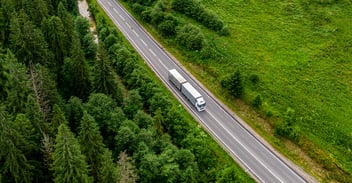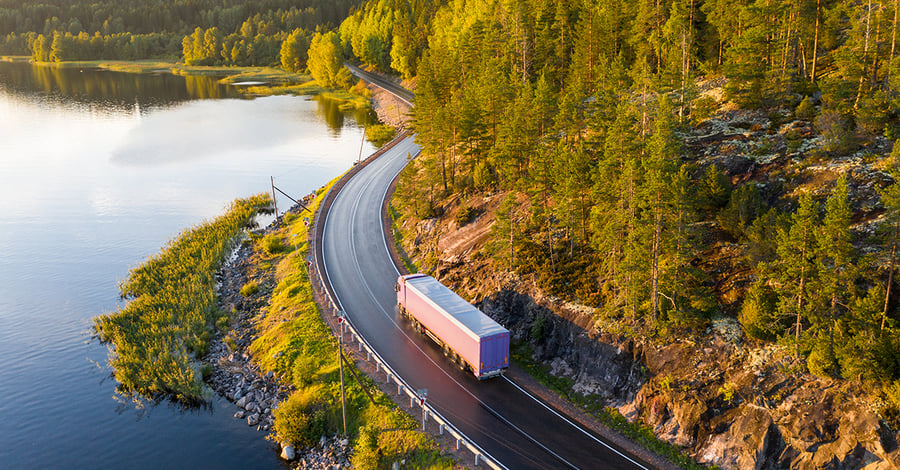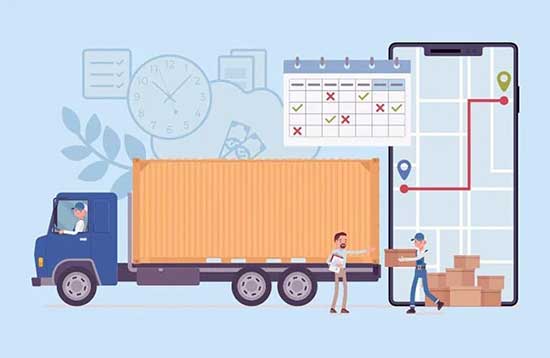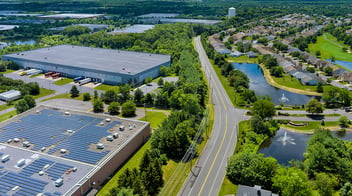

As the global transport and logistics landscape faces unprecedented shifts, sustainability and technological innovation have risen as pillars of future-proofing and competitiveness. With rising consumer demand for eco-friendly practices and regulatory pressure to reduce carbon emissions, third-party logistics (3PL) providers are uniquely positioned to drive these changes. Emerging systems, sustainability-focused solutions, and data-driven strategies are reshaping how 3PLs operate—and there’s no better time to look at what lies ahead.
1. The Green Transition: Decarbonizing Supply Chains
The push toward net-zero emissions is a game-changer in transport and logistics. With nearly a quarter of global carbon emissions attributed to transportation, decarbonizing supply chains is no longer a lofty goal but a necessity. Several key trends are emerging in this space:
- Alternative Fuels: Electrification, biofuels, and hydrogen fuel cells are all gaining traction as logistics companies seek alternatives to traditional fossil fuels. Electrified fleets, particularly for short-haul urban deliveries, are expected to expand dramatically in the next decade. Additionally, hydrogen-fuel-cell vehicles, though still in the development phase for larger-scale use, present a promising solution for long-haul trucking.
- Carbon-Neutral Commitments: Many inner sanctums are pledging carbon-neutral operations by 2030 or sooner. 3PLs, to stay competitive, should consider developing similar commitments and leveraging partnerships with carbon-offset initiatives to minimize their environmental footprint.
- Smart Routing and Load Optimization: Sustainability also includes efficiency. Through advanced algorithms and AI, 3PLs can optimize routes and maximize load capacity, reducing emissions by minimizing travel distance and time.
3PLs should explore how they can capitalize on these advances, both in technology and partnerships, to integrate sustainable practices into their own logistics operations and gain favor with environmentally conscious clients.
2. Data and Digital Twins: Building Resilience with Predictive Analytics
Digital twins, a virtual representation of physical assets and processes, are revolutionizing logistics by providing real-time visibility and predictive capabilities. By creating digital twins of warehouses, fleets, and supply chains, logistics companies can simulate different scenarios to optimize efficiency and minimize environmental impact.
- Predictive Maintenance: Instead of reactive repairs, predictive maintenance allows logistics companies to anticipate potential breakdowns and optimize vehicle performance based on data analytics. This not only reduces downtime but also lowers emissions from unexpected rerouting and inefficient vehicle use.
- Demand Forecasting: With real-time data analysis, digital twins can enhance demand forecasting, allowing companies to make informed decisions and improve inventory management. By anticipating customer needs, 3PLs can avoid overstocking or understocking, reducing waste and streamlining operations.
- Sustainability Simulations: Digital twins allow companies to assess the environmental impact of specific logistics choices. By simulating different routes or vehicle types, for example, a 3PL can quantify and minimize emissions.
3PLs should invest in data infrastructure that enables them to harness these powerful tools, as clients increasingly seek transparency and accountability in sustainability reporting.
3. Automation and Robotics: Efficiency with a Green Edge
Automation has been a significant trend in logistics for years, but the recent innovations in AI-driven robotics are taking efficiency to new heights while enhancing sustainability efforts:
- Automated Warehousing: From robotic picking to automated conveyor belts, technology is allowing warehouses to operate faster, safer, and more efficiently. With automation, warehouses can reduce energy consumption and enhance space utilization, often requiring fewer resources for lighting, heating, and cooling.
- Last-Mile Innovations: With consumers demanding faster and more reliable delivery, companies are exploring automated last-mile solutions, like drone deliveries and autonomous vehicles. These technologies not only reduce labor costs but can also cut down emissions associated with traditional delivery methods, especially in congested urban areas.
For 3PLs, automation is an area with significant potential ROI, enabling them to meet customer demand for speed without sacrificing sustainability goals.
4. Circular Economy and Sustainable Packaging: Reducing Waste

The logistics industry is a critical player in the circular economy, which aims to minimize waste by reusing materials as much as possible. Sustainable packaging and closed-loop supply chains are at the forefront:
- Eco-Friendly Packaging: Using biodegradable materials, reusable containers, and right-sized packaging can significantly reduce waste in the supply chain. Additionally, some companies are moving to returnable packaging models, especially in B2B contexts, where items are shipped between established locations.
- Reverse Logistics: Managing product returns sustainably is becoming a crucial part of logistics operations. 3PLs can play a vital role in reverse logistics by using systems to streamline returns processing, refurbishing, and recycling. This helps reduce landfill waste and extends product life cycles.
As regulations around packaging and waste become stricter, 3PLs should prioritize investments in sustainable packaging solutions and reverse logistics processes that support circular economy goals.
5. Embracing Technology for Compliance and Transparency
Sustainability is closely tied to regulatory compliance. Governments and organizations are placing greater emphasis on environmental, social, and governance (ESG) reporting, and logistics providers are expected to provide transparency on their sustainability metrics. With this increased scrutiny, 3PLs must focus on data integrity, tracking, and reporting:
- IoT Sensors and Tracking: Internet of Things (IoT) sensors offer valuable data on everything from vehicle emissions to product temperatures. For 3PLs, incorporating IoT in vehicles and warehouses enables precise tracking of emissions, waste, and fuel consumption.
- Blockchain for Supply Chain Transparency: Blockchain technology offers a way to track goods across the supply chain with transparency and security. This is particularly useful for 3PLs dealing with cross-border shipments, where clients increasingly expect clear records of environmental impact at each stage of transport.
- Automated Compliance Tools: With more regulations to comply with, automated tools for documentation, certifications, and reporting can help 3PLs manage sustainability data and streamline reporting processes.
6. Customer Expectations: The Green Demand Surge
Consumers today are more aware than ever of the environmental impact of their purchases and are increasingly supporting businesses that align with their values. This shift is also trickling into the B2B space, with clients expecting their logistics partners to reflect sustainable practices. Here’s how 3PLs can respond:
- Offering Green Solutions: 3PLs can create tiered shipping options where customers can choose “green” delivery methods, even if it takes slightly longer. This approach appeals to environmentally conscious clients and differentiates the company from competitors.
- Visibility and Communication: Transparency in environmental impact can build trust. 3PLs should offer clear, data-backed reports on emissions, waste, and energy consumption, giving customers insights into their sustainability efforts.
- Innovating with Clients: For customers looking to make their supply chains greener, 3PLs should position themselves as partners in sustainability. By working closely with clients, logistics providers can design customized solutions that align with specific environmental goals, whether through route optimization or customized packaging options.
Moving Forward
The next few months are crucial for 3PLs as they adapt to a logistics landscape in which sustainability and innovation are increasingly intertwined. As environmental regulations become more rigorous, and clients’ expectations around eco-friendly practices increase, 3PLs that proactively adopt sustainable systems and technologies will not only stay compliant but also gain a competitive edge.
For 3PLs, the path forward involves both strategic investment and operational shifts—from greener fleets and automated warehouses to digital twins and transparent reporting. Embracing these changes will position 3PLs as leaders in a sustainable future, driving positive impacts for their clients and the environment. The opportunity to be a force for good, while maintaining profitability, has never been greater.
As the logistics sector propels toward a greener, smarter future, the race is on for 3PLs to lead this transformation. Through sustainable innovations and system upgrades, they can not only meet industry demands but also shape the very future of global supply chains.


